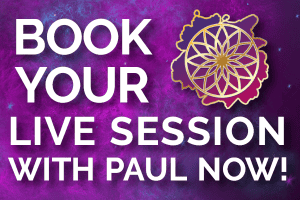Holotropic breathwork of Stanislav Grof can change your life. A Shutterstock Licensed Image.
If you’ve ever stared into the backs of your eyelids and breathed white light into your navel, you’ve done breathwork. Breathwork is a new-age term that refers to rejuvenating breathing techniques aimed at awakening the body’s life force. In many circles, breathwork is a key modality utilized to inspire peacefulness, healing, and the embodiment of the divine. Stan Grof, MD, Ph.D., a clinical psychiatrist from Czechoslovakia and one the founding forefathers of research in transpersonal psychology for non-ordinary states of consciousness and the therapeutic potential of LSD, has turned breathwork into a psychedelic, and the benefits are profound.
Dr. Grof says his “holotropic” technique, i.e., turning or directing inwardly or healing toward wholeness, helps practitioners expand their consciousness through rapid, repetitive breathing.
Naysayers regard this activity as potentially dangerous, noting that it resembles hyperventilation. Regardless, thousands of people throughout the world claim Grof’s technique has reduced their stress- and mind-related ailments, and helps them access the inner wisdom of their bodies and core Self.
“Meditation is to understand that one breath connects all beings.”
― Amit Ray
What Is The Holotropic Mind?
Stanislav Grof’s “holotropic mind” refers to the concept that from any fragment of any aspect of the universe, the whole can be reconstructed. Given that the fabric of the universe and all its attributes are continuously expanding and birthing, the holotropic mind might also be referred to as the “eternal mind” or “one mind.”
David Bohm, a theoretical physicist, and partner of Einstein’s explored the complexities and paradoxes of this concept. Grof writes of Bohm, he “describes reality as an unbroken, coherent whole that is involved in an unending process of change, called “holomovement.” He continues with Bohm’s ideas, stating, “matter and life are both abstractions that have been extracted from the holomovement,” and “matter and consciousness are both aspects of the same undivided whole.”
This brings to mind the ancient Sanskrit prayer:
Om Puurnnam-Adah Puurnnam-Idam Puurnnaat-Puurnnam-Udacyate
Puurnnasya Puurnnam-Aadaaya Puurnnam-Eva-Avashissyate
Om Shaantih Shaantih Shaantih
This translates roughly to:
“That is the whole, this is the whole;
from the whole,
the whole becomes manifest;
taking away the whole from the whole,
the whole remains,
Om peace, peace, peace,”
as noted in the prayerbook from Amma “The Hugging Saint.”
Who Is Stan Grof?
Stanislav Grof grew up in Czechoslovakia and received his M.D. from Charles University in Prague in 1957, before later completing a Ph.D. in medicine at the Czechoslovakian Academy of Sciences eight years later, while studying Freudian psychoanalysis.
Grof held the positions of Chief of Psychiatric Research at the Maryland Psychiatric Research Center, Clinical and Research Fellow at the Henry Phipps Clinic, and Assistant Professor of Psychiatry at Johns Hopkins University School of Medicine in Baltimore. He teaches as a professor of psychology at the California Institute of Integral Studies (CIIS) and his Grof Transpersonal Training (GTT). Dr. Grof has authored several books, including “Psychology of the Future,” “LSD Psychotherapy,” “Beyond the Brain,” “The Cosmic Game,” and “When the Impossible Happens.”
Transpersonal Psychology
Grof is one of the chief theoreticians of transpersonal psychology, a method that incorporates spirituality and unorthodox elements of the human experience into more traditional psychology. In the early 19070s, Grof’s work was recognized by other academics working in the field of alternative branches of psychology, including Michael Murphy and Dick Price who founded the Esalen Institute in Big Sur, an alternative psychological research institution inspired by psychedelic research, eastern philosophy and the ideas of famous minds, such as Aldous Huxley and Alan Watts. It was there that Grof would live for several years doing his early research and living as scholar-in-residence.
In the late 1970s, Grof furthered the development of the field of transpersonal psychology and became the founding president of the International Transpersonal Association, or ITA, in San Francisco as international attention grew for his pioneering work. He and his wife Christina Grof devoted their lives to modern consciousness research, where they made major contributions to this alternative field of psychology, most notably their concepts and works titled “The Stormy Search for the Self,” “The Ultimate Journey,” “Healing Our Deepest Wounds,” “Realms of the Human Unconscious,” and the “Spiritual Emergency.”
In addition to holotropic breathwork, Grof’s work incorporates psychedelic experiences from guided sessions involving psychedelic substances such as LSD. In fact, Grof has guided over 4,500 therapeutic LSD sessions with his patients.
The 16 Benefits Of Holotropic Breathing
It’s no secret that through the breath, we can access the all-pervasive consciousness and heal ourselves. With consistent effort, we can release anger, anxiety, grief, depression, and chronic pain. With pranayama (breath control), we might also deepen our connection to the eternal I Am.
Here are some of the benefits of Holotropic Breathwork:
- Release stored tension
- Access and release old and chronic emotions
- Dissolve energy blocks
- Awaken your core Self-identity and pure nature
- Bring past traumas into the light for recognition, healing, and emotional release
- Invigorate your body and clear your mind
- Break-free of mental chatter
- Break your patterns around perseveration
- Improve your attitude and intentions
- Set yourself on a more proactive life course
- Clarify and improve your self-worth so that you can set better boundaries
- Learn to love yourself and others without codependence or subservience
- Move past your ego for more enlightened interactions and pursuits
- Enrich your creativity
- Invite greater positivity
- Improve your chances of overcoming addiction
If you’re ready to experience your prenatal universe (your core Self before this birth), you’re ready for Holotropic Breathwork. This type of self-exploration is the crux of Grof’s philosophy.
How To Do Holotropic Breathing
While there is no definitive way to practice this technique, and the ancient masters have provided several ways to achieve the same results, here is a set of suggestions that you may find helpful:
- Lay on your back, with your head slightly elevated with a thin pillow.
- Relax and empty your mind of thoughts.
- Take a few deep breaths through your nose and allow the air to fill all areas of your lungs. Slowly and peacefully exhale through your nose.
- Here forward, breathe solely through your mouth. Begin gently with several inhales of fresh air. Allow the air to activate your diaphragm and fill your belly. When your lungs and belly are full, slowly and peacefully exhale. Allow any emotions to arise and release.
- Once you’re comfortable breathing in and out, increase your breathing rate. While some might feel inspired to breathe as fast as they can, the idea here is to remain peaceful. It might be best to slowly accelerate your breathing so that you give rise to a stress-free pace.
- After 3 to 5 minutes, you’ll naturally find your rhythm and style of breathing. If you haven’t pushed yourself too hard, you’ll find that your body will enjoy the rapidity of your breathing. Throughout the process, be careful to remain conscious and attend to your breath.
- If possible, maintain your deep, speedy breathing for up to 20 minutes. If this is your first time, it might be best to stop at 5 to 10 minutes, or less. If you have found comfort in your pace and are feeling safe and fully conscious, consider extending this ritual for up to 2 hours.
“When the breath is unsteady, all is unsteady; when the breath is still, all is still. Control the breath carefully. Inhalation gives strength and a controlled body; retention gives steadiness of mind and longevity; exhalation purifies body and spirit.”– Goraksasathakam
Powerful Breathwork Techniques
Whether you’re a hippie on a beach breathing ocean air to open your mind’s eye, a Hesychastic Christian on Mt. Athos breathing the eternal Christ into your earth-nature, or a Kundalini ashram-yogi doing “Breath of Fire” to awaken into the eternal Self, you’re experiencing the purest modality for self- and divine-connection: inhaling and exhaling to deepen your connection to the one boundless, non-dual reality.
Here are a few of the most wonderful breathing technique to inspire your awareness and awakening:
- Breath of Fire: Seated in lotus pose, relax into measured breathing. When you’re ready, begin increasing your inhalations and exhalations to reach over 60 breaths per minute. As you grow into this experience, you might build toward 120 breaths per minute.
- Sama Vritti: Sit in lotus pose, gently breathe inward and outward in equal durations, and focus on stillness.
- Nadi Shodhana (nostril breathing): A pranayama breathing technique that uses alternate nostrils. This is helpful when preparing for meditation as it stimulates the third eye, crown chakra, and root chakra while balancing the mind and heart.
- Wim Hof Method: A robust process whereby you aggressively inhale through your nose or mouth and then exhale through your mouth. These short, powerful bursts are followed by brief periods of holding one’s breath. The total length of a sitting might be around 15 minutes.
- Abdominal Breathing: This is an essential and effective breathing technique that awakens the body and mind. Sit comfortably and use your diaphragm for breathing inward and outward. Focus on the expansion of the belly, rather than on the rise of the chest.
- Gentle Breathing: Sit or stand in a comfortable position and allow a relaxed breath to fill your lower lungs and belly.
While there are many forms of breathwork and many styles of concentrated breathing, the above list will get you started.
“Without full awareness of breathing, there can be no development of meditative stability and understanding.”
– Thich Nhat Hanh
The Breathing Bottom Line
The key to awakening your peacefulness and awareness is breath. If you can spend 5 minutes per day solely focused on your breathing, you will be doing more for your soul’s expansion than 99.9% of the planet’s population.
Breathwork is also the perfect precursor to meditation. It gets your blood flowing, initiates the release of the mind, and creates space for your unfoldment. Since you are continuously unfolding back into your pre-birth nature and the eternal consciousness, the more space you can create for yourself, the better.
Breathe in light, exhale tension and toxins.
Breathe into love and know yourself.
Breathe and expand.
I am wishing you the most delicious breathing and meditation for all time!







